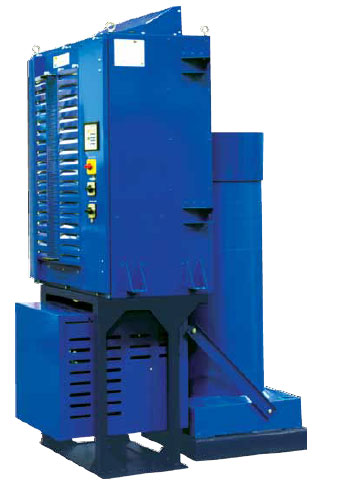Flywheel Energy Storage Grid
Clean Power Concept: Storing Energy. Recycling Energy.

The Challenge
On power grids that utilize renewable resources such as wind and solar, short-term fluctuations in these resources can cause significant power quality problems and reliance on non-renewable generation sources. This is especially true when trying to match supply with demand, particularly on remote or islanded micro-grids where there is either no additional connection or a weak connection to the main utility grid.
In these micro-grid networks when renewable supply exceeds demand, such as during high wind or bright sun conditions, the conventional approach is connecting additional demand loads such as large resistor banks. When supply is less than demand during low wind conditions or cloud coverage, a diesel generator is often used to supply the power. In both scenarios, excess power is wasted and momentary shortfalls are supplemented by non-renewable power. Overall grid system control is also difficult to optimize resulting in poor power quality.
Saving Energy, Reducing Costs
Using Kinetic Traction Systems (KTSi) in-house simulation and analytical tools, cost savings from integrating the flywheel energy storage system in a typical micro-grid application can be estimated. The savings reflect a direct reduction in micro-grid operating costs and CO2 emissions.

Increased Capacity, Improved Reliability
Optimizing grid power is a key enabler to increasing stability and improving the reliability on micro-grids. By providing a buffer or filter between the renewable generation source and the micro-grid electricity demand, the flywheel increases control of the renewable electricity voltage and frequency, thereby increasing stability and reliability of the micro-grid. This provides the opportunity to reduce the use of non-renewable generation sources.
Long Life
The KTSi flywheel system has a long useable life of over 10 million deep charge-discharge cycles, which equates to approximately one charge-discharge cycle every minute for over 20 years. This makes the lifecycle cost particularly attractive when compared to other forms of energy storage, such as ultra-capacitors (about one million cycles) and batteries (about one hundred thousand cycles).
Benefits of a Compact “Electro-Mechanical Battery”
Flywheel energy storage is ideally suited to renewable micro-grids because of the frequent power fluctuations. A flywheel has high relative power density when compared to batteries, allowing it to rapidly capture energy over a relatively short time without affecting the flywheel performance. The KTSi flywheel system is relatively small and completely silent. In addition, because the system is electro-mechanical, it can be located and packaged remotely from generation sources on the grid. Flywheels can also be operated at a much wider range of operating temperatures compared to other forms of energy storage.
Emergency Power
A further benefit of KTSi’s flywheel energy storage system is the ability to provide emergency power in the event of a short-term power outage or disruption. The stored flywheel power can be used to power emergency systems, signage, lighting and other essential needs.
